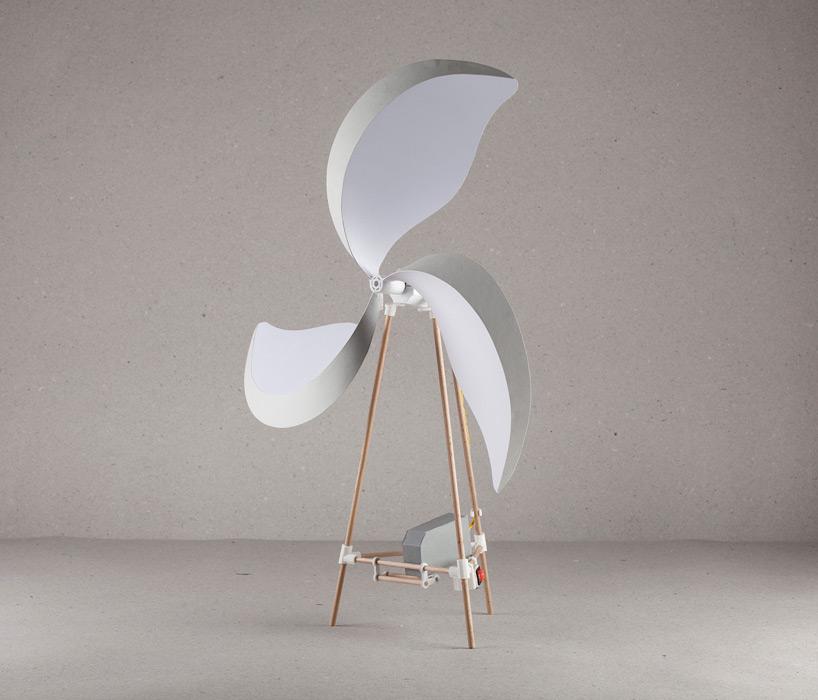The world of industrial design or, at least, increasingly larger sectors of it, is falling more and more in line with the green imperative these days. No longer is the ultimate goal of industrial design simply to make life easier and more comfortable, at least not in the view of many, who want to see design acknowledge the problematics of the endless cycle of production and consumption that just doesn’t sync with more sustainable, environmentally-friendly living.
Enter 3D printing, which has the capacity to take us out of the never ending cycle of planned obsolescence and into a space where creativity wins out over conspicuous consumption and where ingenuity inspires repurposing. One creative design team, which was assembled by BIO 50, the long-running industrial design exposition biennale, hosted by Slovenia’s Museum of Architecture and Design in Ljubljana, was charged with integrating the open source ideology with industrial design. Called, “Hacking Households,” the groups central goal was, in a sense, to think small. That is, to consider how changing the way we think about convenience and consumption in our daily lives, particularly in the home.

The team is being led by two experienced designers, Tilen Sepič and Jesse Howard. The objective was to capitalize on the availability of do-it-yourself circuitry, open source software with robust applications that may easily be produced by connecting chunks of pre-existing code, 3D printing technology, basic domestic appliances, and some very basic materials and tools.
This forward-thinking Hacking Households team, which is comprised of designers Leonardo Amico, Thibault Brevet, Coralie Gourguechon, Jure Martinec, Nataša Muševič, along with Howard and Sepič, began by applying a basic tenet of industrial design: design to standards. They’ve designed and manufactured a series of small, household appliances ranging from a balloon-enclosed lamp to a hand mixer to a series of fans. The basic framework of each appliance is very simple to allow for customization as well as greater variability.
Hacking Households’ designs are on display at the BIO 50 exposition and the group’s video demonstrates how their system works. With the fan, simple wooden dowels connected by 3D-printed joints provide a framework. The blades of the fan–as few as three will suffice–appear also to have been 3D printed. The demo shows the motor of a household mixer being used to power the fan blades but the team notes that other small appliances can be substituted, with standard power blocks, swapped between them. Additionally, thanks to open source software, a “smart” power block can be used to provide controls via the internet.
The appliances are easy to modify and, more importantly, to repair. So, rather than tossing away a non-functional hand mixer or fan, they can be cleverly repurposed, with sustainability and curbing excessive consumption in mind. Indeed, one clever option with the fan: a heating element that can convert the device from summer to winter use. Let’s hear your thoughts on this clever way of using 3D printing to reuse old appliances in the ‘3D Printed Sustainable Industrial Design’ forum thread on 3DPB.com.
[Images: Designboom]Subscribe to Our Email Newsletter
Stay up-to-date on all the latest news from the 3D printing industry and receive information and offers from third party vendors.
Print Services
Upload your 3D Models and get them printed quickly and efficiently.
You May Also Like
3D Printing News Briefs, January 10, 2026: 3D Printing Innovation on Display at CES
Las Vegas was the place to be last week for those interested in the latest gadgets and innovative technology solutions. This year’s Consumer Electronics Show (CES) welcomed over 4,000 exhibitors to...
CurifyLabs Launches Excipient System for 3D Printed, Personalized Pet Medicine
Finnish healthtech startup CurifyLabs was founded in 2021 with the mission of transforming how we make personalized medicines. It combines specialized software, high-quality ingredients, and automated 3D printing production to deliver...
3D Printing News Briefs, December 13, 2025: 3D Imaging, Living Lung Cells, & More
We’re covering medical and dental news in this weekend’s 3D Printing News Briefs, starting with a new innovation at Boston Children’s Hospital that could become standard practice in orthopedics: 3D...
Formnext 2025: New Metal PBF 3D Printer, Serial Production Applications, & More
It’s Day 2 of Formnext 2025, where over 800 exhibitors from around the world have converged in Frankfurt for Europe’s premier additive manufacturing (AM) trade show. From exciting new printers...
































